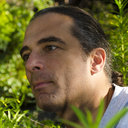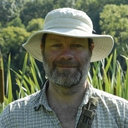Exploring plant defense theory in tall goldenrod, Solidago altissima.
Nøgleord
Abstrakt
Understanding the evolutionary reasons for patterns of chemical defense in plants is an ongoing theoretical and empirical challenge. The goal is to develop a model that can reliably predict how defenses are distributed within the plant over space and time. This is difficult given that evolutionary, ecological, and physiological processes and tradeoffs can operate over different spatial and temporal scales. We evaluated the major predictions of two leading defense theories, the growth-differentiation balance hypothesis (GDBH) and optimal defense theory (ODT). To achieve this, enemies, fitness components, terpenoids, and protease inhibitors were measured in Solidago altissima and used to construct conventional univariate and structural equation models (SEMs). Leaf-tissue value indices extracted from an SEM revealed a strong correlation between tissue value and terpenoid defense that supports ODT. A tradeoff between serine protease inhibition and growth as well as an indirect tradeoff between growth and terpenoids manifested through galling insects supported the GDBH. Interestingly, there was a strong direct effect of terpenoids on rhizome mass, suggesting service to both storage and defense. The results support established theories but unknown genotypic traits explained much of the variation in defense, confirming the need to integrate emerging theories such as pollination constraints, defense syndromes, tolerance, mutualisms, and facilitation.



